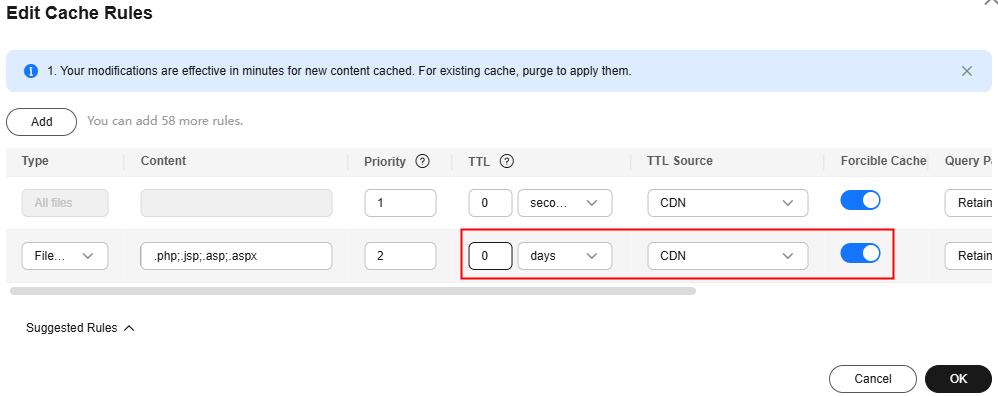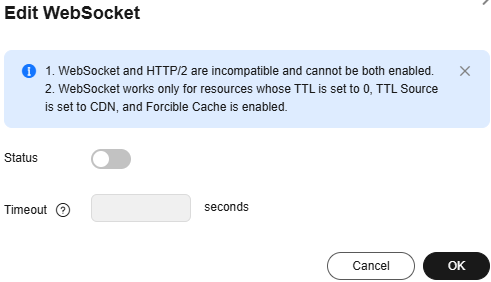WebSocket
If you have added whole site acceleration domain names to CDN to meet requirements such as on-screen commenting, collaborative session, market data broadcast, sports live update, online education, and IoT connectivity, you can configure WebSocket to implement long-term bidirectional data transmission.
Background
WebSocket is a protocol providing full-duplex communication channels over a single TCP connection. It allows a server to proactively push data to clients, simplifying data exchange between the clients and server. A persistent connection can be established between a browser and the server after one handshake and bidirectional data transmission can be performed, saving server resources and bandwidth.
Precautions
- This function applies only to domain names whose Service Type is Whole site. The domain resources are not cached on CDN PoPs. That is, TTL of these resources is set to 0, TTL Source is set to CDN, and Forcible Cache is enabled.

- This function is in OBT and is available for free trial.
- The maximum timeout interval is 300 seconds. If no message is transferred within the specified interval, the connection is closed.
- Do not enable both WebSocket and HTTP/2. Otherwise, your domain name cannot be accessed.
Procedure
- Log in to the CDN console.
- In the navigation pane, choose .
- In the domain list, click the target domain name or click Configure in the Operation column.
- Click the Advanced Settings tab.
- In the WebSocket Settings area, click Edit.
Figure 1 WebSocket Settings

- Turn on the Status switch, set a proper timeout period (1 to 300 seconds), and click OK. This timeout defines how long CDN maintains a session after establishing a connection. It will disconnect if no communication occurs during this period.
Feedback
Was this page helpful?
Provide feedbackThank you very much for your feedback. We will continue working to improve the documentation.






